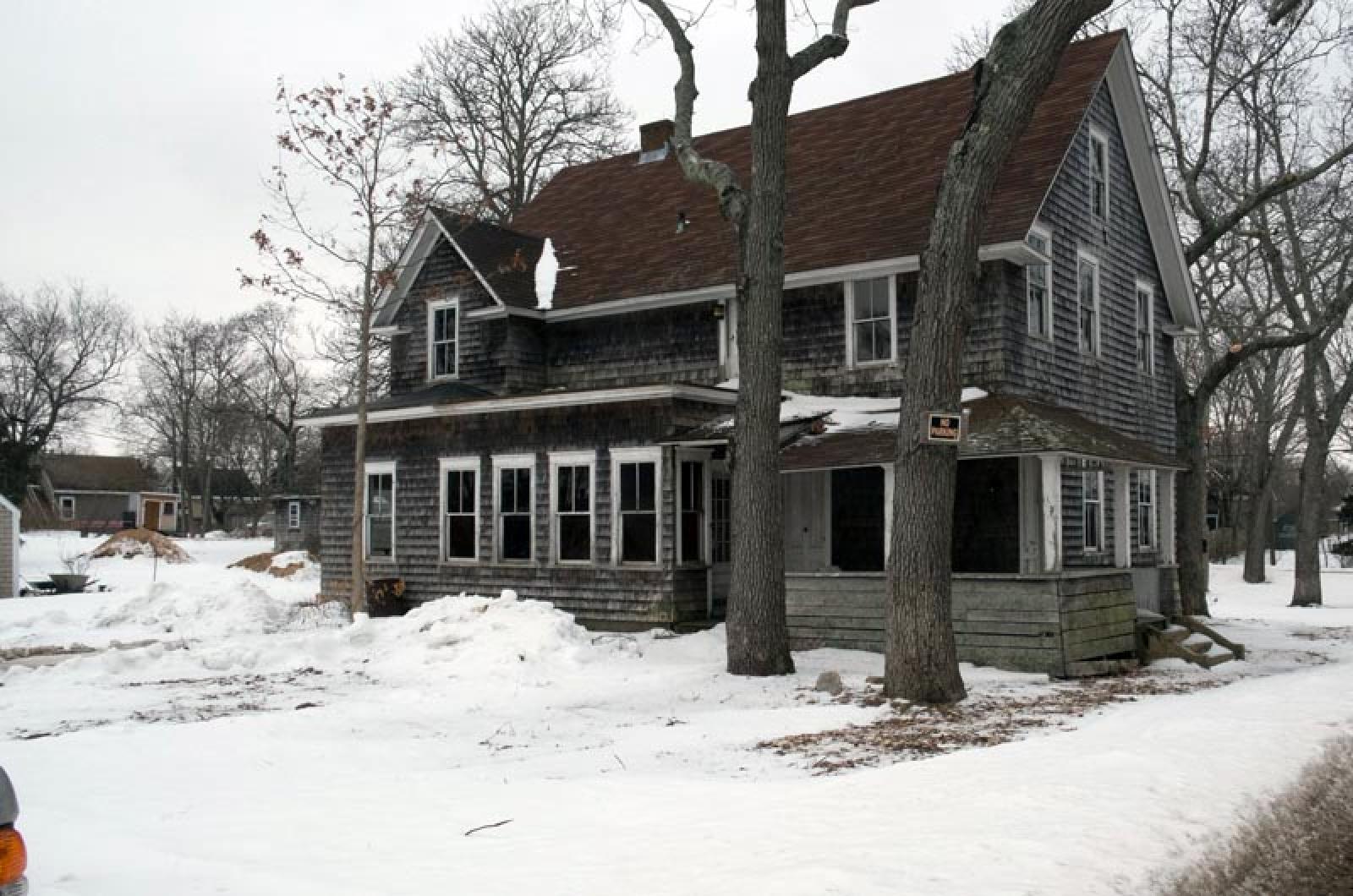The Denniston House will remain standing for now, after a vote this week stalls a request to demolish the former African American church.
On Wednesday the Oak Bluffs historical commission voted to designate the Masonic avenue house “preferably preserved,” an action which buys them time to negotiate a compromise with the property owner.
Previously the commission recognized the building’s social, political and cultural significance under a town bylaw that protects buildings 100 years or older. The house, built in 1895, served as a mission, before it became a spiritual center for the Island’s growing African American community.
The commission is treading on familiar ground. Just five years ago, they blocked demolition proceedings at the Denniston House and sent the project to the Martha’s Vineyard Commission for review as a development of regional impact.
But this week, they held off on a regional referral, opting instead to give the applicant 30 days to produce a plan that would incorporate some of the existing house.
“Maybe there is a part of the building that can be used, or maybe it can be moved,” said commission member Renee Balter.
Matt Viaggio, an agent for the building’s owner, said demolition was not the only option on the table and maintained that no specific plans were in place for the property.
“The building as it stands is more of a liability than an asset,” Mr. Viaggio said. “We are just looking for permission to move on.”
The property is owned by the Masonic Avenue Nominee Trust, which names Island surveyor Doug Hoehn as trustee.
Committee chairman Pam Melrose remained skeptical of her board’s powers, saying that any agreements forged with an applicant have little weight. The commission cannot delay a demolition indefinitely, nor can it compel the historical preservation of a site.
“We don’t really have any teeth,” Ms. Melrose said.
Meanwhile, she said the powers of the MVC go further.
“If they have the discussion, and they come up with the same thing that we do, they at least can enforce it,” she said.
The historical commission will decide on a possible MVC referral at their meeting on March 11 at 3:30 p.m. at the Oak Bluffs library.
David Wilson, a member of the Cottage City Historic District Commission, advocated for the preservation of the structure.
“It’s Black History Month,” he said. “We have an opportunity to do the right thing by our history.” He asked the board to refer the project to the commission on grounds of historical significance and wide public interest.
No stranger to the public eye, the Denniston House was built in 1895 as a mission to help Portuguese immigrants assimilate into American society, according to Gazette archives. In 1907, the Rev. Oscar E. Denniston founded the Bradley Memorial Church, a parish with Portuguese, Wampanoag and African American membership. It is widely considered to be the Vineyard’s first African American church, though members of the historical commission said another building nearby holds that distinction.
Mr. Viaggio said he had plans to meet with the Island chapter of the National Association for the Advancement of Colored People, a civil rights group, “to see what they would like, as far as if maybe a plaque was going to satisfy.”
The church closed in 1966, and remained in a state of disrepair for several decades.
In 2008, the property became the proposed site for an affordable housing development.
The Island Affordable Housing Fund, now defunct, paid $905,000 for the property, and launched a $5 million plan to renovate the building and install a museum, artist studios and a dozen units of affordable housing.
Gov. Deval Patrick even attended the groundbreaking ceremony, where he commended the efforts to expand affordable housing on the Island.
“It was not only reviving the building but reviving it as a public place,” Ms. Balter said this week.
But by 2011, the project had fallen through and the house was sold at a public foreclosure auction for $500,000 to architect Chuck Sullivan.
Though advocates for the existing building did appear at Wednesday’s hearing, others appeared to have lost any zeal for preservation.
Laurie Perry, former president of the NAACP, said it was irresponsible to leave the building as it is.
“As far as its historical significance, it can be marked with a plaque,” she said. “It doesn’t have to be the building itself.”
Amy Billings, a neighbor, wondered how long the town should wait for someone to bring a plan forward to restore the building.
“I go by there every day and it is time to move on,” she said.







Comments (2)
Comments
Comment policy »